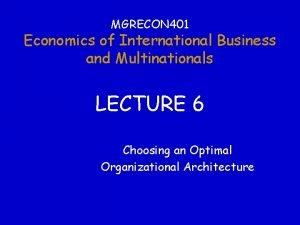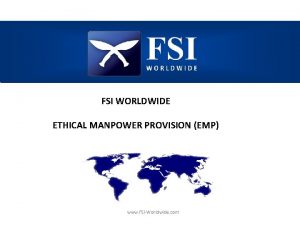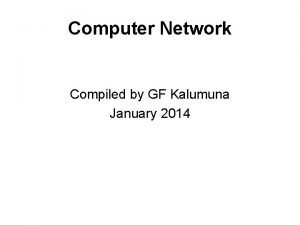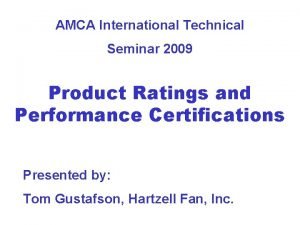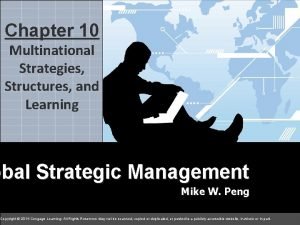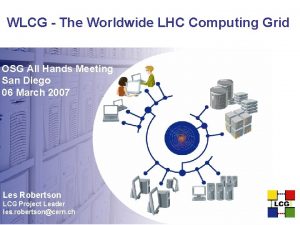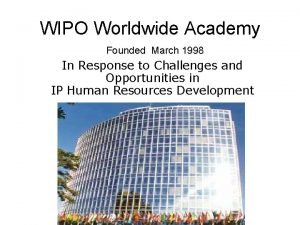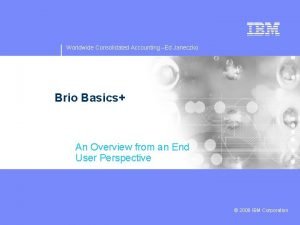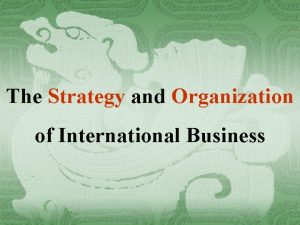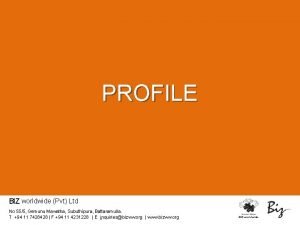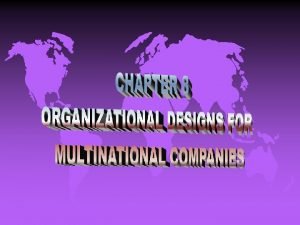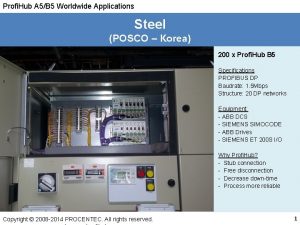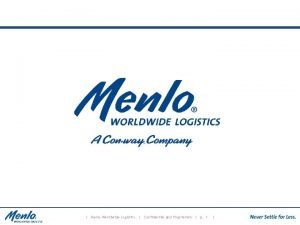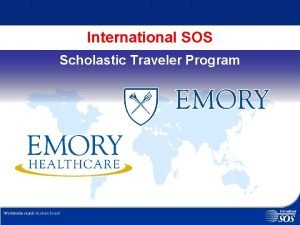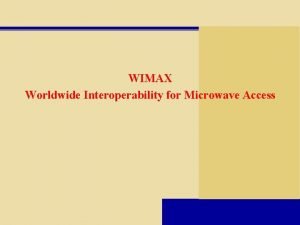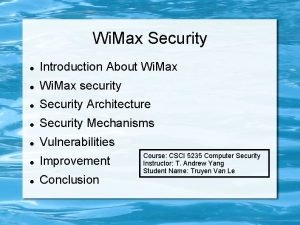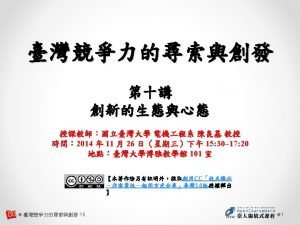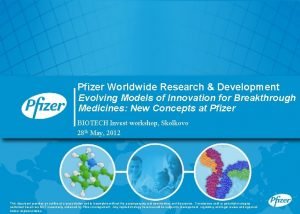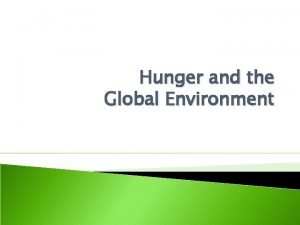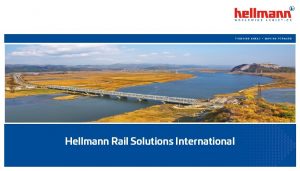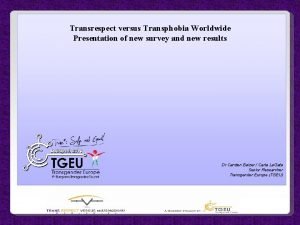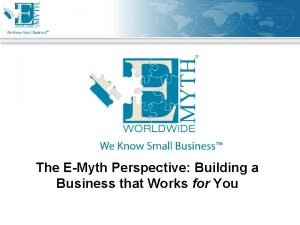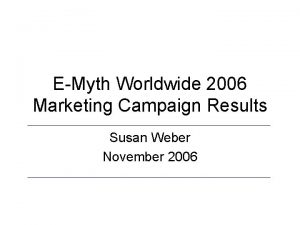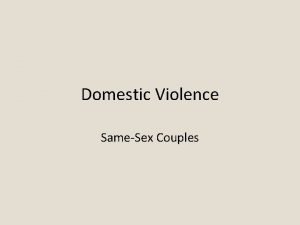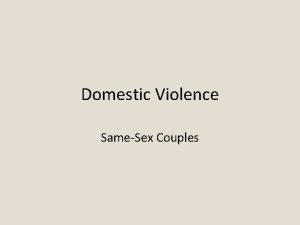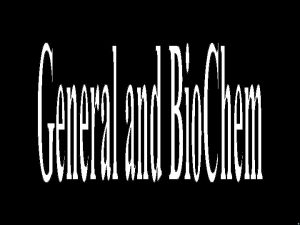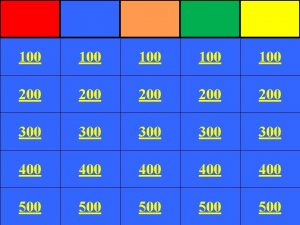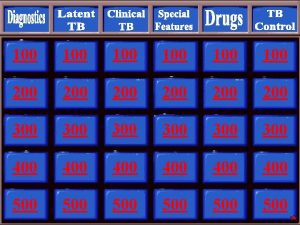Worldwide Network RD 4 200 employees worldwide Domestic


















































- Slides: 50





Worldwide Network 녹십자 본사 및 R&D 오창공장 화순공장 음성공장 · 4, 200 employees worldwide (Domestic 3, 600 / Overseas 600)








수혈의 역사 전시에 헌혈을 독려하기 위한 미국, 영국, 소련의 포스터 The Red Cross during World War II Poster promoting blood donations. (Kendrick, 1939) In 1939, the Red Cross began providing blood for Europe. In 1941 the U. S. asked the Red Cross to begin a blood donor service for the U. S. During World War II, the Red Cross collected and processed blood into blood plasma under Drew.










PIC/S GMP 구성 PIC/S GMP Guide Annexes Part I Basic Requirements for Medicinal Products Part II Basic Requirements for Active Pharmaceutical Ingredients 1 Manufacture of sterile Medicinal products 2 Manufacture of biological medicinal products for human use 3 Manufacture of Radiopharmaceuticals 4 Manufacture of veterinary medicinal products other than immunologicals 5 Manufacture of immunological veterinary medical products 6 Manufacture of medicinal gases 7 Manufacture of herbal medicinal products 8 Sampling of starting and packaging materials 9 Manufacture of liquids, creams and ointments 10 Manufacture of pressurised metered dose aerosol preparations for inhalation 11 Computerised systems 12 Use of ionising radiation in the manufacture of medicinal products 13 Manufacture of investigational medicinal products 14 Manufacture of products derived from human blood or human plasma 15 Qualification and validation 16 Qualified person and batch release 17 Parametric release 18 GMP Guide for active pharmaceutical ingredients 19 Reference and Retention Samples 20 Quality Risk Management

3 -1 PIC/S Annex 2 Manufacture of biological medicinal products for human use

PIC/S Annex 2 1. Personnel (including those concerned with cleaning, maintenance or quality control) employed in areas where biological medicinal products are manufactured and tested should receive training, and periodic retraining, specific to the products manufactured and to their work, including any specific measures to protect product, personnel and the environment 2. The health status of personnel should be taken into consideration for product safety. Where necessary, personnel engaged in production, maintenance, testing and animal care (and inspections) should be vaccinated with appropriate specific vaccines and have regular health checks. 3. Any changes in the health status of personnel, which could adversely affect the quality of the product, should preclude work in the production area and appropriate records kept. Production of BCG vaccine and tuberculin products should be restricted to staff who are carefully monitored by regular checks of immunological status or chest X-ray. Health monitoring of staff should be commensurate with the risk, medical advice should be sought for personnel involved with hazardous organisms. 1. 작업원 - 제품과 작업에 대한 교육 및 정기적인 재교육 실시 - 작업원에 대한 백신접종 및 정기적인 건강검진 - 건강상의 문제가 있는 작업원은 제조에서 배제 및 기록 유지

PIC/S Annex 2 2. Premise and Equipment (1) 5. As part of the control strategy, the degree of environmental control of particulate and microbial contamination of the production premises should be adapted to the product and the production step, bearing in mind the level of contamination of the starting materials and the risks to the product. The environmental monitoring programme in addition to Annex 1 should be supplemented by the inclusion of methods to detect the presence of specific microorganisms (e. g. host organism, anaerobes, etc) where indicated by the QRM process. 6. Manufacturing and storage facilities, processes and environmental classifications should be designed to prevent the extraneous contamination of products. Although contamination is likely to become evident during processes such as fermentation and cell culture, prevention of contamination is more appropriate than detection and removal. In fact, the environmental monitoring and material bioburden testing programs are intended to verify a state of control. Where processes are not closed and there is therefore exposure of the product to the immediate room environment (e. g. during additions of supplements, media, buffers, gasses, manipulations during the manufacture of ATMPs) measures should be put in place, including engineering and environmental controls on the basis of QRM principles. These QRM principles should take into account the principles and requirements from the appropriate sections of Annex 112 when selecting environmental classification cascades and associated controls. hazardous organisms. 2. 시설 및 설비(1) - 생산시설의 환경관리는 출발물질의 오염정도와 최종제품 위험도에 따라 생산 단계별로 조정 (QRM : Quality Risk Management 에 근거) - 보관소 및 작업장은 외부오염을 방지할 수 있도록 디자인되어야 함 - close 공정이 아닌 경우 QMR에 근거하여 기술적, 환경적 관리 대책 마련

PIC/S Annex 2 2. Premise and Equipment (2) 10. The measures and procedures necessary for containment (i. e. for environment and operator safety) should not conflict with those for product safety. 11. Air handling units should be designed, constructed and maintained to minimise the risk of crosscontamination between different manufacturing areas and may need to be specific for an area. Consideration, based on QRM principles, should be given to the use of single pass air systems. 12. Positive pressure areas should be used to process sterile products but negative pressure in specific areas at the point of exposure of pathogens is acceptable for containment reasons. Where negative pressure areas or safety cabinets are used for aseptic processing of materials with particular risks (e. g. pathogens), they should be surrounded by a positive pressure clean zone of appropriate grade. These pressure cascades should be clearly defined and continuously monitored with appropriate alarm settings. 2. 시설 및 설비(2) - 환경이나 작업원의 안전을 위한 조치가 제품 품질에 영향을 미치면 안됨 - 공기조화장치는 제조구역 간의 교차오염 최소화되게 디자인 및 관리 - 병원체 노출 구역은 음압을 사용할 수 있으며 알람장치등으로 지속적 관리

PIC/S Annex 2 2. Premise and Equipment (3) 15. The use of 'clean in place' and ‘steam in place’ (‘sterilisation in place’) systems should be used where possible. Valves on fermentation vessels should be completely steam sterilisable. 16. Air vent filters should be hydrophobic and validated for their scheduled life span with integrity testing at appropriate intervals based on appropriate QRM principles. 17. Drainage systems must be designed so that effluents can be effectively neutralised or decontaminated to minimise the risk of cross-contamination. Compliance with local regulations is required to minimize the risk of contamination of the external environment according to the risk associated with the biohazardous nature of waste materials. 2. 시설 및 설비(3) - 가능하다면 CIP와 SIP 사용하는 것이 바람직함 - 공기 밴트필터는 소수성 이어야 함 - 배수시스템은 중화시키거나 오염원이 제거될 수 있도록 디자인되어야 하며 교차오염을 최소화 해야 함

PIC/S Annex 2 3. Animals 19. A wide range of animal species are used in the manufacture of a number of biological medicinal products or starting materials. These can be divided into 2 broad types of sources: (a) Live groups, herds, flocks: examples include polio vaccine (monkeys), immunosera to snake venoms and tetanus (horses, sheep and goats), allergens (cats), rabies vaccine (rabbits, mice and hamsters), transgenic products (goats, cattle). (b) Animal tissues and cells derived post-mortem and from establishments such as abattoirs: examples include xenogeneic cells from animal tissues and cells, feeder cells to support the growth of some ATMPs, abattoir sources for enzymes, anticoagulants and hormones (sheep and pigs). In addition, animals may also be used in quality control either in generic assays, e. g. pyrogenicity, or specific potency assays, e. g. pertussis vaccine (mice), pyrogenicity (rabbits), BCG vaccine (guinea-pigs). 23. Note should be taken of national requirements for animal quarters, care and quarantine. Housing for animals used in production and control of biological products should be separated from production and control areas. 24. For different animal species, key criteria should be defined, monitored, and recorded. These may include age, weight and health status of the animals. 3. 동물 - 생물의약품 및 출발물질 제조에 사용되는 동물유형은 크게 2가지임 a) 살아있는 동물 b) 죽은 동물 유래 동물조직 또는 세포나 도축장에서 얻은 동물조직 및 세포 - 동물 사육시설은 제조 및 품질관리 구역과 분리되어야 함 - 동물의 연령, 무게, 건강상태 등의 기준이 규정되고 점검 및 기록되어야 함

PIC/S Annex 2 4. Documentation 26. Specifications for biological starting materials may need additional documentation on the source, origin, distribution chain, method of manufacture, and controls applied, to assure an appropriate level of control including their microbiological quality. 28. Where human cell or tissue donors are used, full traceability is required from starting and raw materials, including all substances coming into contact with the cells or tissues through to confirmation of the receipt of the products at the point of use whilst maintaining the privacy of individuals and confidentiality of health related information. Traceability records must be retained for 30 years after the expiry date of the product. 4. 문서 - 생물원료에 대한 공급처, 기원, 공급, 제조 및 관리방법 등이 문서화 되어야 함 - 추적관리기록은 제품의 유효기간 종료 후 30년 동안 보존한다.

PIC/S Annex 2 5. Production 29. Given the variability inherent in many biological substances and products, steps to increase process robustness thereby reducing process variability and enhancing reproducibility at the different stages of the product lifecycle such as process design should be reassessed during Product Quality Reviews. 30. Since cultivation conditions, media and reagents are designed to promote the growth of cells or microbial organisms, typically in an axenic state, particular attention should be paid in the control strategy to ensure there are robust steps that prevent or minimise the occurrence of unwanted bioburden and associated metabolites and endotoxins. For cell based ATMPs where production batches are frequently small the risk of cross-contamination between cell preparations from different donors with various health status should be controlled under defined procedures and requirements. 5. 제조 - Products Quality Review 통해 공정의 robustness 증가시켜야 함 - 원치 않는 bioburden이나 대사산물, 엔도톡신등의 발생을 방지하거나 최소화 할 수 있는 전략이 있어야 함.

PIC/S Annex 2 6. Starting materials (1) 31. The source, origin and suitability of biological starting and raw materials (e. g. cryoprotectants, feeder cells, reagents, culture media, buffers, serum, enzymes, cytokines, growth factors) should be clearly defined. Where the necessary tests take a long time, it may be permissible to process starting materials before the results of the tests are available ~~ 32. The risk of contamination of starting materials during their passage along the supply chain must be assessed, with particular emphasis on TSE. Materials that come into direct contact with manufacturing equipment or the product (such as media used in media fill experiments and lubricants that may contact the product) must also be taken into account 34. Where sterilization of starting materials is required, it should be carried out where possible by heat. Where necessary, other appropriate methods may also be used for inactivation of biological materials (e. g. irradiation and filtration). 6. 출발물질 (1) - 출발물질의 기원, 공급원, 적합성을 명확히 규정해야 함 - 제조장비 또는 제품과 직접 접촉되는 물질 (Media, 윤활유) 등의 오염위험도 고려되어야 함 - 출발물질의 멸균은 열을 이용하여 실시. 단, 방사선조사와 필터 등의 방법도 가능

PIC/S Annex 2 6. Starting materials (2) 36. For human tissues and cells used as starting materials for biological medicinal products: (a) Their procurement, donation and testing is regulated in some countries. Such supply sites must hold appropriate approvals from the national competent authority(ies) which should be verified as part of starting material supplier management. (b) Where such human cells or tissues are imported they must meet equivalent national standards of quality and safety. The traceability and serious adverse reaction and serious adverse event notification requirements may be set out in national legislation. (e) The transport of human tissues and cells to the manufacturing site must be controlled by a written agreement between the responsible parties. The manufacturing sites should have documentary evidence of adherence to the specified storage and transport conditions. (f) Continuation of traceability requirements started at tissue establishments through to the recipient(s), and vice versa, including materials in contact with the cells or tissues, should be maintained. 6. 출발물질 (2) 사람조직이나 세포를 이용하는 경우 - 일부 국가에서 구매, 기증, 시험 규제됨. 이 경우 출발물질공급관리에 대한 국가기관 승인필요 - 수입하는 경우 국가의 품질 및 안전성기준이 일치해야 함. - 운송은 서면합의에 의해 관리되어야 함. 보관 및 운송 적합함에 대한 증거 문서 보유해야 함 - 출발물질 공급자 ~ 공급 받는자 까지 지속적인 추적성이 유지되어야 함

PIC/S Annex 2 7. Operating Principles (1) 48. Change management should, on a periodic basis, take into account the effects, including cumulative effects of changes (e. g. to the process) on the quality of the final product. 49. Critical operational (process) parameters, or other input parameters which affect product quality, need to be identified, validated, documented and be shown to be maintained within requirements. 50. A control strategy for the entry of articles and materials into production areas should be based on QRM principles to minimise the risk of contamination. For aseptic processes, heat stable articles and materials entering a clean area or clean/contained area should preferably do so through a doubleended autoclave or oven. Heat labile articles and materials should enter through an air lock with interlocked doors where they are subject to effective surface sanitisation procedures. Sterilisation of articles and materials elsewhere is acceptable provided that they are multiple wrappings, as appropriate to the number of stages of entry to the clean area, and enter through an airlock with the appropriate surface sanitisation precautions. 7. 작업원칙 (1) - 공정의 변경 등은 변경관리는 주기적으로 평가되어야 함 - 주요공정변수 및 품질에 영향을 주는 기타 변수는 밸리데이션되고 문서화 되 고 요구조건 내 유지됨을 확인해야 함 - 작업장내 물품반입 시 양방향 Autoclave나 Oven, 인터락 도어가 설치된 에어 락을 통해 반입

PIC/S Annex 2 7. Operating Principles (2) 57. The methods used for sterilisation, disinfection, virus removal or inactivation should be validated. 58. In cases where a virus inactivation or removal process is performed during manufacture, measures should be taken to avoid the risk of recontamination of treated products by non-treated products. 60. A wide variety of equipment is used for chromatography. QRM principles should be used to devise the control strategy on matrices, the housings and associated equipment when used in campaign manufacture and in multi-product environments. The re-use of the same matrix at different stages of processing is discouraged. Acceptance criteria, operating conditions, regeneration methods, life span and sanitization or sterilization methods of columns should be defined. 62. There should be a system to assure the integrity and closure of containers after filling where the final products or intermediates represent a special risk and procedures to deal with any leaks or spillages. Filling and packaging operations need to have procedures in place to maintain the product within any specified limits, e. g. time and/or temperature. 65. The compatibility of labels with ultra-low storage temperatures, where such temperatures are used, should be verified. 7. 작업원칙 (2) - 멸균, 소독, 바이러스 제거/불활화 공정은 밸리데이션되어야 함 - 바이러스 제거/불활화 공정이 있는 경우 처리 후 제품의 재오염 방지되어야 함 - 용기의 적합성 및 완전성이 고려되어야 함, 충전 및 포장공정은 시간과 온도 기 준이 있어야 함 - 초저온에서 사용되는 라벨은 적합성이 밸리데이션 되어야 함

PIC/S Annex 2 8. Quality Control 67. In-process controls have a greater importance in ensuring the consistency of the quality of biological medicinal products than for conventional products. In-process control testing should be performed at appropriate stages of production to control those conditions that are important for the quality of the finished product. 68. Where intermediates can be stored for extended periods of time (days, weeks or longer), consideration should be given to the inclusion of final product batches made from materials held for their maximum in-process periods in the on-going stability programme. 71. For products with a short shelf life, which need batch certification before completion of all end product quality control tests (e. g. sterility tests) a suitable control strategy must be in place. Such controls need to be built on enhanced understanding of product and process performance and take into account the controls and attributes of input materials. The exact and detailed description of the entire release procedure, including the responsibilities of the different personnel involved in assessment of production and analytical data is essential. A continuous assessment of the effectiveness of the quality assurance system must be in place including records kept in a manner which permit trend evaluation. 8. 품질관리 - 품질의 일관성을 유지하기 위해 적절한 공정단계에서 공정검사(IPC) 실시함 - 반제품 보관기관 연장 시 최대기간 보관한 원료로 제조한 완제품의 안정성 시 험도 고려해야 함. - 유효기간이 짧거나 모든 시험 완료 전 출하가 필요한 경우에는 적절한 관리전 략필요

3 -2 PIC/S Annex 14 Manufacture of products derived from human blood or human plasma

PIC/S Annex 14 1. Scope 1. 1 The provisions of this Annex apply to medicinal products derived from human blood or plasma, fractionated in or imported into the country. The Annex applies also to the starting material (e. g. human plasma) for these products. 1. 2 This Annex defines specific Good Manufacturing Practices (GMP) requirements for collection, processing, storage and transport of human plasma used for fractionation and for the manufacture of medicinal products derived from human blood or plasma. 1. 4 The Annex does not apply to blood components intended for transfusion. 1. 범위 - 사람의 혈액 및 혈장유래 의약품에 적용됨 - 혈장분획제제 제조에 사용되는 혈장의 채장, 제조, 보관, 운송 규정 - 수혈을 목적으로 하는 혈액성분은 제외

PIC/S Annex 14 2. Principle 2. 1 Medicinal products derived from human blood or plasma (and their active substances which are used as starting materials) must comply with the principles and guidelines of Good Manufacturing Practice as well as the relevant marketing authorisation. They are considered to be biological medicinal products and the starting materials include biological substances, such as cells or fluids (including blood or plasma) of human origin. Certain special features arise from the biological nature of the source material. For example, disease- transmitting agents, especially viruses, may contaminate the source material. The quality and safety of these products relies therefore on the control of source materials and their origin as well as on the subsequent manufacturing procedures, including infectious marker testing, virus removal and virus inactivation. 2. 3 Starting material for the manufacture of medicinal products derived from human blood or plasma imported from other countries and intended for use or distribution within the country must meet the national standards. 2. 5 Depending on national legislation, specific requirements for documentation and other arrangements relating to the starting material of plasma-derived medicinal products are defined in the Plasma Master File. 2. 원칙 - 사람혈액 또는 혈장유래 의약품 및 출발물질은 모두 PIC/S GMP Guide 본문을 준수해야 함 - 혈액매개 바이러스 제거/불활화, 출발물질 관리가 품질 및 안전성에 매우 중요 - 수입한 혈장도 국내 기준에 적합해야 함 - PMF를 보유하고 있어야 함

PIC/S Annex 14 3. Quality Management (1) 3. 1 Quality management should govern all stages from donor selection in the blood establishment up to delivery of the finished product by the finished product manufacturer. 3. 2 Blood or plasma used as source material for the manufacture of medicinal products must be collected and processed by blood establishments and be tested in laboratories which apply quality systems in accordance with national or international standards. Reference is made to documents listed in the addendum. The blood establishments have to be authorised and subject to regular inspections by a national competent authority. 3. 5 The fractionation plant/manufacturer of the finished product should establish written contracts with the supplying blood establishments. As a minimum the following key aspects should be addressed: - definition of duties and respective responsibilities - quality system and documentation requirements - donor selection criteria and testing - requirements for the separation of blood into blood components/plasma - freezing of plasma - storage and transport of plasma - traceability and post donation / collection information (including adverse events). 3. 품질관리(1) - 공혈자 선정~ 완제품 까지 모든 과정에 대한 관리 - 국내 및 국제적인 기준에 적합하게 채혈 및 시험 실시되어야 함 혈장제조업체는 정부기관의 승인 및 주기적인 실사를 받아야 함 - 혈액원과 제조업체간의 서면 계약서 필요

PIC/S Annex 14 3. Quality Management (2) 3. 6 A formal change control system should be in place to plan, evaluate and document all changes that may affect the quality or safety of the products, or traceability. The potential impact of proposed changes should be evaluated. The need for additional testing and validation, especially viral inactivation and removal steps, should be determined. . 3. 7 An adequate safety strategy should be in place to minimise the risk from infectious agents and emerging infectious agents. This strategy should involve a risk assessment that: - defines an inventory holding time (internal quarantine time) before processing the plasma to remove look back units. - considers all aspects of virus reduction and/or testing for infectious agents or surrogates. - considers the virus reduction capabilities, the pool size and other relevant aspects of the manufacturing processes. . 3. 품질관리(2) - 품질 및 안전성 (추적성) 영향 주는 변경은 변경관리시스템에 따라 진행 - 감염인자로부터 위험 최소화 위한 전략 (위험평가)

PIC/S Annex 14 4. Traceability and Post collection measures (1) 4. 1 There must be a system in place that enables each donation to be traced, from the donor and the donation via the blood establishment through to the batch of medicinal product and vice versa. 4. 2 Responsibilities for traceability of the product should be defined (there should be no gaps): - from the donor and the donation in the blood establishment to the fractionation plant (this is the responsibility of the RP of the blood establishment); - from the fractionation plant to the manufacturer of the medicinal product and any secondary facility, whether a manufacturer of a medicinal product or of a medical device (this is the responsibility of the RP). 4. 3 Data needed for full traceability must be stored according to national legislation. 4. 4 The contracts (as mentioned in 3. 5) between the blood establishments (including testing laboratories) and the fractionation plant/manufacturer should ensure that traceability and post collection measures cover the complete chain from the collection of the plasma to all manufacturers responsible for release of the final products. 4. 추적성과 채혈 후 조치(1) - 공혈 ~ 의약품제조 과정 (또는 그 반대과정) 추적할 수 있는 시스템 - 추적성에 대한 혈액원책임 : 공혈 ~ 분획시설 추적성에 대한 제조업자 책임 : 분획시설 ~ 완제의약품 - 추적성 관련 자료는 반드시 보관 - 계약서에 추적성 및 책임범위 명확히 언급

PIC/S Annex 14 4. Traceability and Post collection measures (2) 4. 5 The blood establishments should notify the fractionating plant/manufacturer of any event which may affect the quality or safety of the product including serious adverse events and reactions and other relevant information found subsequent to donor acceptance or release of the plasma, e. g. look back information (post-collection information). Where the fractionation plant/manufacturer is located in another country, the information should be forwarded to the manufacturer responsible for release in the country of any product manufactured from the plasma concerned. In both cases, if relevant for the quality or safety of the final product, this information should be forwarded to the competent authority responsible for the fractionation plant/manufacturer as required by national legislation. 4. 6 The notification procedure as described in 4. 5 also applies when an inspection of a blood establishment by a competent authority leads to a withdrawal of an existing licence/certificate/ approval. 4. 추적성과 채혈 후 조치(2) - 혈액원은 혈장출하 후 확인된 품질 및 안전성 관련 사항을 제조업자에게 통보 - 규제기관에도 관련 사항 전달되어야 함 - 규제기관 실사에 따른 혈액원의 승인상태 변경 (승인, 인증, 취소 등) 도 통보

PIC/S Annex 14 4. Traceability and Post collection measures (3) 4. 7 The management of post-collection information should be described in standard operating procedures and taking into account obligations and procedures for informing the competent authorities. Post-collection measures should be available as defined in national or relevant international recommendations. The blood establishment and the fractionation/manufacturer should inform each other if, following donation: - It is found that the donor did not meet the relevant donor health criteria; - A subsequent donation from a donor previously found negative for viral markers is found positive for any of the viral markers; - It is discovered that testing for viral markers has not been carried out according to agreed procedures; - The donor has developed an infectious disease caused by an agent potentially transmissible by plasma-derived products (HBV, HCV, HAV and other non-A, non-B, non-C hepatitis viruses, HIV-1 and 2 and other agents in the light of current knowledge); - The donor develops Creutzfeldt-Jakob disease (CJD or v. CJD); In the event of any of the above, a re-assessment of the batch documentation should always be carried out. The need for withdrawal of the given batch should be carefully considered, taking into account criteria such as the transmissible agent involved, the size of the pool, the time period between donation and seroconversion, the nature of the product and its manufacturing method. 4. 추적성과 채혈 후 조치(3) - 공혈자의 건강기준 미달, 바이러스시험결과 양성전환, 시험절차 문제, 공혈자의 바이러스 감염 (HIV, HCV, HBV, HAV, v. CJD, CJD)시 반드시 통보 - 상기 혈장 사용된 경우 해당배치 재평가 (필요 시 회수 검토)

PIC/S Annex 14 5. Premises and Equipment 5. 1 In order to minimise microbiological contamination or the introduction of foreign material into the plasma pool, thawing and pooling of plasma units should be performed in an area conforming at least to the Grade D requirements defined in Annex 1 of the PIC/S GMP Guide. Appropriate clothing should be worn including face masks and gloves. All other open manipulations during the manufacturing process should be done under conditions conforming to the appropriate requirements of Annex 1 of the PIC/S GMP Guide. 5. 3 In the production of plasma-derived medicinal products, appropriate viral inactivation or removal procedures are used and steps should be taken to prevent cross contamination of treated with untreated products. Dedicated and distinct premises and equipment should be used for manufacturing steps before and after viral inactivation treatment. 5. 4 To avoid placing routine manufacture at risk of contamination from viruses used during validation studies, the validation of methods for virus reduction should not be conducted in production facilities. Validation should be performed according to international recommendations. 5. 시설 및 장비 - 혈장 해동 및 수집(pooling) 은 최소 Grade D 에서 실시 - 작업자 보호를 위한 안면마스크와 장갑 등 착용 필수 - 공정 중 바이러스 불활화 및 제거절차 존재해야 하며 처리 전 후 전용의 시설 및 장비 사용 - 바이러스 불활화/제거 밸리데이션은 생산시설에서 진행되면 안됨

PIC/S Annex 14 6. Manufacturing - Starting Material 6. 3 Depending on the type of collection (i. e. either whole blood collection or automated apheresis) different processing steps may be required. All processing steps (e. g. centrifugation and/or separation, sampling, labelling, freezing) should be defined in written procedures. 6. 4 Any mix-ups of units and of samples, especially during labelling, as well as any contamination, e. g. when cutting the tube segments/sealing the containers, must be avoided. 6. 5 Freezing is a critical step for the recovery of proteins that are labile in plasma, e. g. clotting factors. Freezing should therefore be performed as soon as possible after collection (see the European Pharmacopoeia monograph No 0853 "Human Plasma for Fractionation" and where relevant, monograph No 1646 "Human Plasma pooled and treated for virus inactivation", or other relevant Pharmacopoeia), following a validated method. 6. 6 The storage and transport of blood or plasma at any stage in the transport chain to the fractionation plant should be defined and recorded. Any deviation from the defined temperature should be notified to the fractionation plant. Qualified equipment and validated procedures should be used. 6. 제조 (출발물질) - 채혈종류에 따라 공정이 달라질수 있으며 모든 공정은 문서화 되어야 함. - 혈장 본품과 샘플이 혼동되지 않도록 labelling - 응고인자 등 불안정한 단백 회수 위해 동결작업은 검증된 방법으로 신속히 진행 - 혈장의 보관 및 운송기준은 정의 되고 기록되어야 함

PIC/S Annex 14 6. Manufacturing - Processing of plasma for fractionation 6. 9 The steps used in the fractionation process vary according to product and manufacturer and usually include several fractionation/purification procedures, some of which may contribute to the inactivation and/or removal of potential contamination. 6. 10 Requirements for the processes of pooling, pool sampling and fractionation/purification and virus inactivation/removal should be defined and followed thoroughly. 6. 11 The methods used in the viral inactivation process should be undertaken with strict adherence to validated procedures and in compliance with the methods used in the virus validation studies. Detailed investigation of failures in virus inactivation procedures should be performed. Adherence to the validated production process is especially important in the virus reduction procedures as any deviation could result in a safety risk for the final product. Procedures which take this risk into consideration should be in place. 6. 제조 (분획 공정) - 제조공정 중 바이러스 제거 및 불활화 공정이 있어야 함 - 수집(pooling), 샘플준비, 분획/정제, 바이러스 불활화/제거 공정 조건을 규정 - 바이러스 불활화 공정은 반드시 밸리데이션 된 공정이어야 함

PIC/S Annex 14 7. Quality Control 7. 1 Testing requirements for viruses or other infectious agents should be considered in the light of knowledge emerging on infectious agents and on the availability of appropriate, validated test methods. 7. 2 The first homogeneous plasma pool (e. g. after separation of the cryoprecipitate from the plasma pool) should be tested using validated test methods of suitable sensitivity and specificity, according to the relevant Pharmacopoeia monographs. 7. 품질관리 - 적합한 감도와 특이성에 대한 밸리데이션된 시험방법으로 시험 진행 8. Release of Intermediate and Finished products 8. 1 Only batches derived from plasma pools tested and found negative for virus markers / antibodies and found in compliance with the relevant Pharmacopoeia monographs, including any specific virus cut -off limits, and with the approved specifications (e. g. Plasma Master File if applicable), should be released. 8. 2 The release of intermediates intended for further in-house processing or delivery to a different site and the release of finished products should be performed by the Responsible Person and in accordance with the approved marketing authorisation. 8. 반제품 및 완제품의 출하 - 바이러스 시험 및 항체검사에서 음성인 배치만 출하가능 - 반제품 및 완제품의 출하는 책임자 (Responsible person)가 승인

PIC/S Annex 14 9. Retention of Plasma Pool Samples One plasma pool may be used to manufacture more than one batch and/or product. Retention samples and corresponding records from every pool should be kept for at least one year after the expiry date of the finished medicinal product with the longest shelf-life derived from the pool. 9. 수집혈장 검체의 보관 - 보관검체와 관련기록은 제조된 제품 중 가장 유효기간이 긴 제품의 유효기간 + 1년간 보관 10. Disposal of Waste There should be written procedures for the safe and documented storage and disposal of waste, disposable and rejected items (e. g. contaminated units, units from infected donors, out of date blood, plasma, intermediate or finished products). 10. 폐기물 폐기 - 폐기물 및 부적합 품목에 대한 안전하고 문서화된 처리절차가 있어야 함.

 200 200 300
200 200 300 200+200+100+100
200+200+100+100 200+400+600+800
200+400+600+800 200+200+300
200+200+300 100 200 300
100 200 300 200+200+300+300
200+200+300+300 200 + 200 + 300
200 + 200 + 300 Exchangewise
Exchangewise Worldwide telescope online
Worldwide telescope online Bp 401
Bp 401 Fsi worldwide
Fsi worldwide Are countrywide and worldwide networks
Are countrywide and worldwide networks Church of god worldwide association
Church of god worldwide association Amca worldwide certified ratings
Amca worldwide certified ratings Worldwide product division structure
Worldwide product division structure Worldwide lhc computing grid
Worldwide lhc computing grid Wipo dl 101
Wipo dl 101 Caterpillar dealers worldwide
Caterpillar dealers worldwide The swift society
The swift society What impact does the ocean have on climate brainpop
What impact does the ocean have on climate brainpop Church of god worldwide association
Church of god worldwide association Worldwide accounting diversity
Worldwide accounting diversity Brio accounting
Brio accounting International business strategy
International business strategy Biz worldwide (pvt) ltd
Biz worldwide (pvt) ltd Organizational subunits
Organizational subunits 5 voices myers-briggs
5 voices myers-briggs Worldwide applications
Worldwide applications Confidential logistics company
Confidential logistics company Worldwide reach human touch
Worldwide reach human touch Eagle worldwide
Eagle worldwide Worldwide interoperability for microwave access
Worldwide interoperability for microwave access Worldwide interoperability for microwave access (wimax)
Worldwide interoperability for microwave access (wimax) Worldwide espacenet
Worldwide espacenet In worldwide
In worldwide Pfizer global research and development
Pfizer global research and development Worldwide one person in every experiences persistent hunger
Worldwide one person in every experiences persistent hunger Hellmann worldwide logistics
Hellmann worldwide logistics Good morning data
Good morning data Coffee production worldwide
Coffee production worldwide Worldwide mentorship
Worldwide mentorship Discussion questions about entrepreneurship
Discussion questions about entrepreneurship Transrespect
Transrespect Emyth worldwide
Emyth worldwide Smart logistics panama
Smart logistics panama Vorwerk direct sales
Vorwerk direct sales Emyth worldwide
Emyth worldwide Differences between virtual circuits and datagram networks
Differences between virtual circuits and datagram networks Network topology in computer network
Network topology in computer network Features of peer to peer network and client server network
Features of peer to peer network and client server network Network systems design using network processors
Network systems design using network processors









